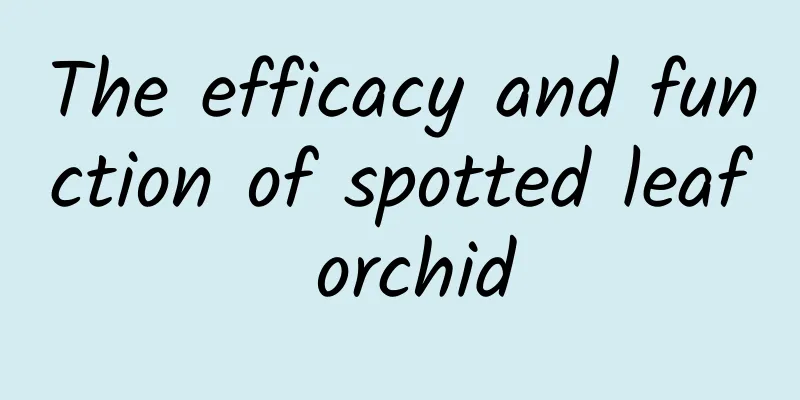Knowing this medicine will definitely benefit you for the rest of your life

|
Once upon a time, there was a famous doctor who was invited to treat a seriously ill patient. The patient suffered from chest and back pain, low-grade fever, and vomiting of foul-smelling pus, and no doctor could cure him. The famous doctor examined the patient and read prescriptions, but could not find an appropriate treatment method. The famous doctor took a nap at his desk out of fatigue. Suddenly, a woman in white came over and said, "This man is a good person. He is kind and benevolent, and benefits all living things. When he saw someone catching a snake, he bought the snake and released it. You must treat him carefully and save his life." The famous doctor asked the woman in white for a prescription, and the woman said, "Please follow me." He followed the woman in white to the outdoors, but the woman in white disappeared. Where the woman in white was standing, there was a white snake, and the place where the snake's tongue was sticking out turned into a clump of grass. Just as he was surprised, the famous doctor was awakened by footsteps. It turned out that the patient's family came to invite him to have dinner. The famous doctor said, "Wait a minute, please follow me." The famous doctor and the patient's family went outside and saw that growing on the edge of the ridge were indeed many slender grasses with small white flowers, as they had seen in the dream. So he picked some and asked him to boil it and take it immediately. After taking the medicine, the patient felt that his chest was much wider. The next day, he took more than a pound of medicine and recovered. Famous doctors searched through all the herbal books of the time, but could not find out what kind of medicine this little grass belonged to. He was inspired to compose a poem: "The slender white snake tongue grass lies on the ground and lingers beside the farmhouse. Since ancient times, good deeds have been rewarded with good deeds, and the magic insects are grateful for the good deeds and the medicine is passed down." [Other names] Snake tongue grass (Guangxi Chinese Materia Medica), snake tongue yellow (Southern Fujian Folk Herbs), Qiandachui, Sheep Beard Grass (Guangdong Chinese Medicine), Snake General Manager, Crane Tongue Grass, Slender-leaved Willow (Fujian Chinese Herbs). [Source] The whole herb with roots of Hedyotis diffusa Willd., a plant of the Rubia cordifolia species. Harvested in summer and autumn, sun-dried or used fresh. [Morphology] Annual herb, 15 to 50 cm tall. The stem is slender. Leaves are opposite, linear to linear-lanceolate, 1-3.5 cm long, 1-3 mm wide, leathery; stipules are membranous. Flowers solitary or 2 in leaf axils; corolla white; fruit capsule. Flowering period is from July to September. The fruiting period is from August to October. [Habitat] Distributed in Yunnan, Guangdong, Guangxi, Fujian, Zhejiang, Jiangsu, Anhui and other places, growing in grass on hillsides, roadsides and stream banks. [Nature and flavor] Sweet and slightly sour, cold in nature, non-toxic. [return through meridians] enters the heart, liver and spleen meridians. 【Functions and indications】 Clears away heat, promotes dampness and detoxifies. Treat lung heat, cough, wheezing and tonsillitis. Pharyngitis, appendicitis, dysentery, urinary tract infection, jaundice, hepatitis, pelvic inflammatory disease, adnexitis, carbuncles, furuncles, snake bites, and tumors. It can also be used for digestive tract cancer. [Usage and Dosage] For oral use: decoct in water, 1 to 2 liang; or mash into juice. For external use: mash and apply. 【Note】Use with caution during pregnancy. 【Selection】 ①Treatment of gastritis: 50g of Oldenlandia diffusa, 10g of Corydalis yanhusuo, add 250-300ml of water, boil and simmer for 30 minutes. Decoction twice for each dose, divided into 3 doses before meals, 20 days as a course of treatment. It is effective in treating superficial gastritis. ②Treatment of hepatitis: 30-60 grams of Oldenlandia diffusa, 20-30 grams of Salvia miltiorrhiza, and 10-30 grams of Isatis root. It has significant effect in treating acute icteric hepatitis. Add 30 grams of Hedyotis diffusa, 30 grams of Centella asiatica, and 10 grams of Leonurus japonicus to 600 ml of water, boil it, remove the residue and take 400 ml of juice, add appropriate amount of sugar, take it in 3 times, one course of treatment is two weeks. The dosage for children is halved. The treatment of acute viral hepatitis is effective. Take 30 grams each of Hedyotis diffusa and Imperata root, 15 grams each of Salvia miltiorrhiza and Codonopsis pilosula, 1 dose per day, decocted in water and taken in 3 doses. It is best to take the medicine after meals. Stop the medicine for 2 to 3 days after taking 4 to 5 doses in a row, and then continue to take it according to the original prescription, with appropriate additions and subtractions. It is also effective in treating acute viral hepatitis. ③Treatment of benign thyroid nodules: 30 grams of Oldenlandia diffusa, 15 grams of red peony root, 6 grams of Platycodon grandiflorum, and 10 grams of brown sugar. Long-term use has good results. ④Treat acute appendicitis: 2-4 liang of Houttuynia cordata, 1-2 liang of Sheep's Hoof, 3 qian of Two-sided Needle Root. Decoction in water. (Guangdong "Selected Chinese Herbal Medicine Prescriptions") ⑤To treat children with fever and insomnia: take one tablespoon of fresh Hedyotis diffusa juice. ("Folk Herbs in Southern Fujian") ⑥Treatment of acne: 20-30 grams of Hedyotis diffusa, 15-20 grams each of Ophiopogon japonicus and Rehmannia glutinosa, 10-15 grams of Scrophularia ningpoensis, 1 dose per day, decocted twice in water, a total of 500 ml, taken in two doses. The residue can be added with 1000-2000 ml of water for decoction, wash the affected area after it is warm, 3-4 times a day. Avoid using cosmetics and other medicines during treatment. ⑦Treatment of stubborn vulvar eczema: 30g each of Hedyotis diffusa, Atractylodes lancea, and Smilax glabra, 20g of Artemisia argyi (added later), add 1500ml of water, soak for 10-15 minutes, simmer for 20 minutes, and when the filtrate is at a suitable temperature, use it for sitting bath and fumigation of the vulva for 10-15 minutes, once a night, 15 times as a course of treatment, and 1-2 courses of treatment are required. The therapeutic effect is satisfactory. ⑧For the treatment of dysentery and urethritis: Take 1 liang of Houttuynia cordata and decoct it in water. (Fujian Chinese Herbal Medicine) ⑨Treat sores, swelling, heat and pain: Wash fresh Houttuynia cordata, mash it and apply it on the affected area, replace it when it dries. ("Folk Herbs in Southern Fujian") ⑩Treatment of poisonous snake bites: 1 to 2 liang of fresh Hedyotis diffusa. Mash the juice or decoct it in water and drink it, and apply the residue to the wound. (Fujian Chinese Herbal Medicine) Or take 15 grams of Hedyotis diffusa and 250 grams of white wine, boil for 3 to 5 minutes, remove the residue, take 2/3 orally (take it 2 to 3 times a day), and use 1/3 to apply to the wound. When applying the medicine, first suck out the toxic blood from the wound, clean and disinfect it, cover and bandage it with a sterilized cotton pad, and then wet the dressing with the above-mentioned medicinal wine (to keep it moist). If you cannot drink alcohol, you can boil the water and then add an appropriate amount of white wine, but it is better to boil it with white wine. [Remarks] In Fujian and Guangxi, Hedyotis corymbosa (L.) Lam and Hedyotis tenelliflora Bl. are also used as Hedyotis diffusa. |
<<: For stubborn pharyngitis, you only need this flower
>>: Kidney Yang and Kidney Yin, one medicine is enough
Recommend
Love will leave an imprint on the brain丨Tech Weekly
Compiled by Zhou Shuyi Love leaves an imprint on ...
You are not fat, but your belly is big? There are 6 major health risks hidden behind the small belly, don't ignore them
There are many kinds of fat. Some people are fat ...
[Smart Farmers] From ancient times to the present, from small to large, how has it influenced the world? Uncovering the "global journey" of wheat
Have you ever thought that every meal we eat is i...
The efficacy and function of torch flower
Only when we understand the main ingredients of a...
Who has the final say on whether one's physique is good or bad? Is it determined by nature or nurture?
Winter is the season that tests people's phys...
The efficacy and function of dog medicine
Everyone is familiar with dog medicine, of course...
Without it, we might not have developed the atomic bomb.
Friends who have read "The Three-Body Proble...
The efficacy and function of Kunxiansi
Kunxiansi is a kind of traditional Chinese medici...
Medicinal value of raw Rehmannia root
The medicinal herb Rehmannia glutinosa can be use...
Congratulations! my country successfully launched the test satellite No. 20C
At 9:01 am on October 29, my country successfully...
What are the effects of Astragalus and Angelica Tea?
If many plants are fully utilized, they can be ve...
This generation of young people has been targeted by gout...
A younger body I can't stand your tossing and...
What is pine pollen good for?
More and more people are talking about health pre...









